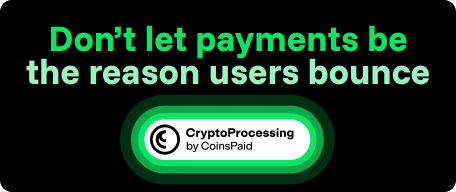Tokenized Stocks: Breaking Down the Wall Between Crypto and Wall Street

Tokenized stocks are shaking up capital markets, letting equities be issued, traded, and settled directly on public blockchains. Think of it as swapping the backroom paperwork and two-day waits for an instant, always-on network.
Unlike legacy systems such as the Depository Trust & Clearing Corporation (DTCC), these digital instruments offer real-time, borderless transactions, T+0 settlement, fractional ownership, and plug-and-play DeFi (decentralized finance) integration — all while keeping the same economic profile as traditional securities.
Three structural models lead the pack:
- Asset-backed tokens — backed by actual shares.
- Synthetic tokens — track stock prices without giving you the stock.
- Native on-chain equities — issued and governed entirely by smart contracts.
Each comes with its own legal and regulatory quirks.
Industry leaders like Figure Markets and Superstate are building the rails for this shift, blending blockchain-native tools with regulated infrastructure like Alternative Trading Systems (ATS) and digital transfer agents. With regulators in the U.S., EU, and Asia starting to take them seriously, tokenized stocks are moving from idea to investable reality for both Wall Street and everyday investors.
Defining Tokenized Stocks
A tokenized stock is essentially a digital twin of a traditional stock, secured by cryptography and traded on a blockchain. How it’s structured depends on the model: sometimes the token represents a real share held by a custodian; other times, it simply mirrors the price without giving ownership.
Asset-backed tokenized stocks hold their value one-to-one with actual shares. Those shares sit with a regulated custodian, and proof-of-reserves on-chain confirms full collateralization. Backed Finance’s xStocks work this way. Each AAPLx token, for example, is matched to a real Apple share purchased by a Bermudian SPV via Payward Digital Solutions Ltd. (PDSL). Holders can cash out, but usually can’t swap for the actual share, which remains in depositary custody.
Synthetic tokenized stocks skip ownership entirely. They use smart contracts and blockchain-linked price feeds (oracles) to track a stock’s performance. This opens the door to wider programmability and global access, but also brings risks like oracle errors, contract bugs, and legal uncertainty. Synthetix was an early pioneer here.
Native on-chain equities are born and live entirely on the blockchain. Often tied to DAOs, they can have voting rights and incentives baked into their code. The catch? Whether those rights hold up legally depends on the jurisdiction.
Comparing Tokenized and Traditional Equities
Traditional equities pass through brokers, clearinghouses, and registrars, with settlement taking two business days (T+2). Tokenized stocks — asset-backed or synthetic — settle almost instantly, thanks to blockchain automation. Native on-chain equities settle the moment the transaction hits the chain.
Access is another big change. Traditional stocks trade during market hours on regulated broker platforms. Tokenized stocks? You can trade them 24/7 from anywhere with internet and a compatible wallet.
Legal rights differ:
- Traditional stocks = ownership, voting rights, and shareholder protections
- Asset-backed tokens = economic exposure, but often no voting rights
- Synthetic tokens = no ownership or voting rights.
- Native on-chain equities = possible governance rights, but enforcement depends on the law
Feature Comparison
| Feature | Traditional Stocks | Asset-Backed Tokens | Synthetic Tokens | Native On-Chain Equities |
| Legal Ownership | Yes | No | No | Yes (if structured legally) |
| Voting Rights | Yes | No | No | Yes |
| 24/7 Trading | No | Yes | Yes | Yes |
| Blockchain Utility | No | Yes | Yes | Yes |
| Regulatory Clarity | High | Medium | Low | Low to Medium |
Bottom line: Traditional stocks have the clearest legal status. Tokenized models offer flexibility, global reach, and design freedom.
Here we illustrate a generic structure of an asset-backed token:
As an on-chain investor, it gains exposure to traditional stocks through blockchain-native tokens that are fully backed by real shares. The funds are sent to a regulated broker-dealer working with a special purpose vehicle (SPV), which purchases and securely custodies the underlying stock in the traditional market. Once those shares are held off-chain, the SPV issues tokenized versions on-chain via Backed Finance, giving instant, verifiable ownership recorded on the blockchain. This lets to trade, settle, and transfer her holdings with the speed and flexibility of crypto markets, while knowing each token is tied directly to a real-world equity asset.
Capital Efficiency and DeFi Integration
Tokenized equities aren’t just “buy and hold” assets. They can act as collateral, power liquidity pools, or feed structured products that generate yield.
Take TSLAx. You can deposit it into Kamino Finance to secure stablecoin loans or earn staking rewards. This turns a stock into a dynamic, yield-generating building block for DeFi.
Mike Cagney, CEO of Figure Markets, puts it bluntly: tokenization doesn’t just speed things up — it rewrites the rules of capital formation.
The Global Regulatory Landscape
United States
The SEC classifies tokenized stocks as securities under the 1933 and 1934 Acts. Platforms must register or qualify for an exemption. The proposed GENIUS Act could create a single, clear framework for fully reserved tokenized securities. Figure Markets already operates a regulated ATS for tokenized equities, supported by blockchain-based transfer agent services.
European Union
Under MiFID II (the EU’s main investment services rulebook), tokenized financial instruments can be made compliant. Backed Finance operates under Liechtenstein’s FMA oversight. Robinhood EU issues tokenized stocks as blockchain-based contracts tied to shares held by a U.S. broker-dealer. They’re minted on Arbitrum and set to migrate to an Arbitrum Orbit Layer-2.
Asia
Singapore’s MAS and Hong Kong’s SFC have created sandboxes to test programmable equity pilots.
Superstate’s Hybrid Architecture
Superstate offers a “start on-chain, uplist later” path. As a registered transfer agent, it issues tokenized stocks on Solana but keeps the legal framework for future Nasdaq or NYSE listings. The pitch is that you can embrace blockchain efficiencies today and still meet public market rules tomorrow.
Why Tokenized Stocks Are the Future of Trading
“Tokenization will compress settlement cycles, democratize access, and ultimately replace how capital formation works.” – Mike Cagney
Key advantages:
- Access — Anyone with internet and a crypto wallet can join in.
- Time — Trade anytime, no market-hour limits.
- Cost — Fewer intermediaries, invest from as little as $5.
- Speed — Instant settlement, no T+2 delays.
In DeFi, tokenized stocks can also be collateral, earn yield, or pair in liquidity pools.
Picture this. You want $100 worth of Tesla. You buy TSLAx on Kraken, move it to a Phantom Wallet, stake it on Kamino for yield or a loan, then sell it later on Raydium. All in minutes — no brokers, no waiting for settlement.
Risks and Considerations
Tokenized stocks aren’t risk-free. Some don’t grant voting rights or direct ownership. Smart contracts and oracles can fail. Regulatory clarity varies. Liquidity can vanish during volatile after-hours periods. If used as DeFi collateral, sharp drops can trigger cascading liquidations.
The Outlook for Tokenized Capital Markets
The future looks more institutional. Expect broker-dealers to offer tokenized private equity, ETFs, and yield-wrapped equity products. Sovereigns may eventually recognize blockchain-based share registries.
Superstate is built around the ideas that tokenized markets will let issuers go public sooner, on their own terms, aligned with a digital-first economy.
Conclusion
Tokenized stocks aren’t just a technical novelty. They merge blockchain speed and global access with institutional-grade compliance. They could redefine how value is created, moved, and governed.
For investors, regulators, and innovators, it’s worth paying attention. This shift isn’t coming. It’s already here.











